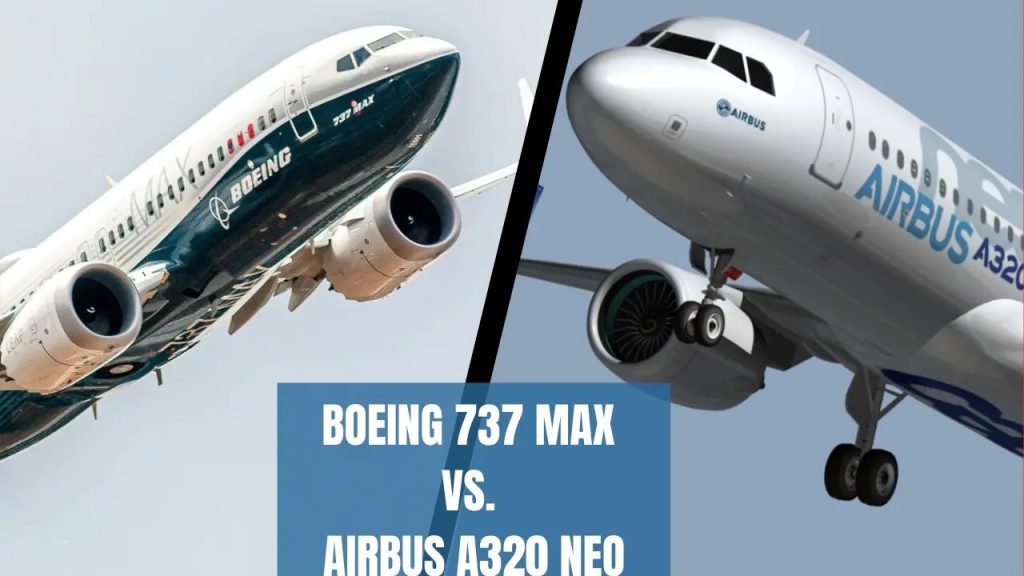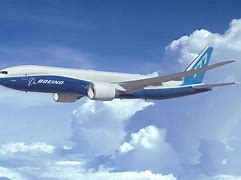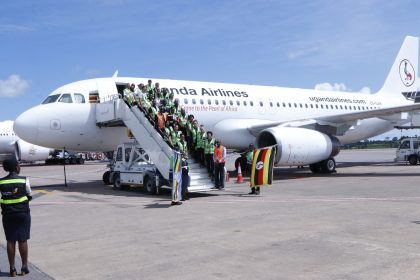Will politics trump sense in Uganda Airlines mid-range aircraft selection?

Michael Wakabi
As US airframer Boeing makes a determined push to recover Uganda as one of its clients, an April 7, letter from President Yoweri Museveni to US Ambassador Natalie Brown, shows just how much the choice Uganda Airlines shareholders settle for, may be as much a matter of politics as technical considerations.
A letter by President Museveni dated April 7, 2023 to Ms Brown became public late last month. It was in apparent reply to one by Brown on March 27, 2023. In his rejoinder, the President directed the Uganda Airlines management and its parent Ministry of Works and Transport, to consider Boeing’s offer to meet the flag carrier’s fleet needs.
Museveni is careful not to appear be directly backing Boeing. He tells the officials “to study the suitability” of Boeing aircraft for the national carrier. He says Uganda Airlines previous experience with Boeing 707’s and 737’s was positive. On the B737Max-8 crashes in Indonesia and Ethiopia that dented the type’s reputation, he tells the technical teams to study the remedial measures Boeing has undertaken to fix the bugs.
President Museveni’s letter was in reply to one of March 27, in which Ambassador Brown conveyed a proposal by Boeing to outfit Uganda Airlines. The embassy weighed in after Boeing expressed misgivings that it was not getting the expected level of engagement with Ugandan officials.
Uganda Airlines has not called for bids yet, but aware of the gaping hole between the carrier’s Mitsubishi CRJ-900’s and the ultra-long-haul A330-800, manufacturers have bombarded management and the shareholders with proposals. In internal working documents, Uganda Airlines has defined its immediate needs as being a passenger aircraft in the 100+ seat range with the capacity to efficiently operate the heavier segments on its envisaged intra-African network. It is common knowledge that Uganda Airlines is already struggling to maximise revenue payload and passenger baggage on the Johannesburg route using the CRJ’s. On the other hand, the A330 has sometimes proven too large to economically operate on the Dubai route.
The midrange is expected to be capable of operating economically within Africa and on some medium haul routes into Europe, Asia and the Middle East, whenever the A330 is unavailable for whatever reason. Two medium haul aircraft will initially be ordered but the fleet will eventually expand to six.
For its cargo operations the airline requires two medium capacity aircraft in the 20-30 ton payload class and a longer distance hauler capable of at least 70 tons of cargo. The two aircraft will complement each other – feeding and de-feeding – between the intra-African, regional and intercontinental routes.
So what is at stake for Airbus and Boeing in Uganda?
Uganda Airlines represents one of the recent coups by Airbus in the wider African market but particularly Eastern Africa. An incumbent alongside Mitsubishi at Uganda Airlines, the manufacturer had disappeared from the region when Kenya Airways phased out its Airbus A310 fleet in the early 2000’s.
By virtue of being the older manufacturer, Boeing has enjoyed a captive market around the world out of sheer availability. Many African carriers operated Boeing aircraft, which resulted in a large pool of pilots and engineering resources on the continent for the type. For a long time, that was a reinforcing factor in favour of Boeing as new carriers sought to set up, or incumbents considered fleet growth. When it first started out in 1976, the current flag carrier’s predecessor launched with Boeing 707-300C. These were combi-aircraft designed to carry passengers and cargo on the main deck. Later, as the airline struggled in the 80’s and 90’s, it took to leasing Boeing 737’s. In many instances, Ugandan bureaucrats use the Boeing noun to mean large capacity aircraft.
But the dismal performance of African national carriers saw many of them fold. Although Boeing remained incumbent, it somewhat became dismissive of the capacity of African governments to establish viable airlines. That is how Airbus burrowed into Africa with its A320 series, bringing a product range that offered more flexibility to match capacity to traffic.
When Tanzania sought to boost its national carrier in the mid-2000’s, Boeing did not believe they had the resources until they leased a pair of A320’s. Having tasted the type, Airbus was high up on Tanzania’s merit order, when the Magufuli administration went shopping. The airline now has four A220’s in its fleet.
Boeing suffered further upsets when frustrated with the technical glitches and delivery delays around the B787 Dreamliner, Ethiopian, a Boeing Customer for more than half a century, in 2014, ordered a dozen A350-900’s that were designed to compete with the Dreamliner. Rwanda would soon follow with a pair of A330’s that entered service with the airline in 2017, a year before Uganda also selected the A330-800 for its long-haul fleet.
The battle lines are therefore set, Boeing seeking to recoup lost territory and Airbus building on its incumbency to grow its presence at Uganda Airlines. Even an order for a single aircraft at Uganda Airlines would therefore, make a lot of difference for the Chicago headquartered US airframer.
What technical attributes will be at play in Uganda Airlines selection?
From an operating perspective, both manufacturers have a potential solution for Uganda Airlines. Both aircraft are upgrades of existing platforms which were stretched, re-engined and given an aerodynamic sweep-over to deliver better fuel efficiency, higher passenger capacity and flying range over their predecessors. Within Airbus’ A320neo series, Uganda Airlines can find a model that ticks all the boxes. Airbus’ biggest advantage is that the A320neo series have longer legs and more room for innovation around passenger amenities. The A320neo can fly non-stop to London with a full load. Its wider fuselage means the premium cabin can be designed to be closer to what is found on the A330, making for a seamless onboard experience, without throwing away too much capacity in terms of seat-count.
Airbus Fly-by- wire flight control system also means that flight-deck crew can easily be cross-qualified to shuffle between the smallest model to the largest at minimal cost. Finally, going Airbus will avoid fleet complexity and its attendant costs, driving the fleet to where the operator can cash in on the economies of scale across crew, engineering, maintenance and procurement that come with a larger fleet.
What then flies for the Max? In the Max-8 series, Boeing has the aircraft with the lowest Seat-mile cost in that class. In simple terms, Seat-mile cost, is the amount of money ( or more directly fuel) it costs to fly one passenger on an aircraft for a particular distance. Albeit with a lower seat count, the Max can also fly pretty much to anywhere Uganda Airlines sees operating the type in its network. But this advantage may not amount to much because the extra-seating capacity on the A320, translates into more revenue overall, on a good day. Boeing can however, neutralise the latter consideration by pointing to the Max’s larger capacity for belly-cargo, a much desired combination that can translate into a good balance between passengers revenues and cargo on scheduled flights.
The downside would be compromises on capacity – which would erode the Seat-mile advantage- and introducing fleet complexity and the high costs associated with employing and qualifying different sets of pilots, engineers and mechanics for two different types of aircraft in small numbers.
Boeing can offset that, or more precisely, Uganda Airlines can capitalise on that to bargain huge discounts. In return Boeing could tie that to a commitment for future aircraft purchases from the manufacturer. That can be considered a win-win position.
Also, Boeing might have an upper hand on delivery times and the freighter order. Slots on their Max line are not as stretched out as on the A320neo , they can deliver a new-build aircraft earlier. It is however, understood that in the interim, both manufacturers are proposing a lease solution. On the cargo side, Boeing has an optimal solution in the 737-300 conversions and new build 767’s which are very close to Uganda Airlines specifications.
Will politics come to the rescue?
A major development partner injecting millions of dollars into Uganda’s social sector annually, the United States exports to Uganda average less than USD 150m a year. With big ticket procurement and infrastructure projects often a tool for addressing imbalances in such situations, Washington would feel snubbed if Boeing walked away empty-handed from this sales campaign. A split decision, in which Boeing gets the freighter order while the airlines passenger wing presses on with building economies around Airbus types, might therefore be the only way of reconciling the competing interests.

 Brussels Airlines to announce Nairobi service
Brussels Airlines to announce Nairobi service
 SITA promises enhanced travel experience after Materna acquisition
SITA promises enhanced travel experience after Materna acquisition
 Saudia’s 105 aircraft order stretches A320neo lead over rival Max
Saudia’s 105 aircraft order stretches A320neo lead over rival Max
 Boeing refuses to pay hackers $200 million for stolen Data
Boeing refuses to pay hackers $200 million for stolen Data
 Uganda-Tanzania announce date for second joint business forum
Uganda-Tanzania announce date for second joint business forum
 Uganda Airlines leased A320 arrives in Entebbe
Uganda Airlines leased A320 arrives in Entebbe
